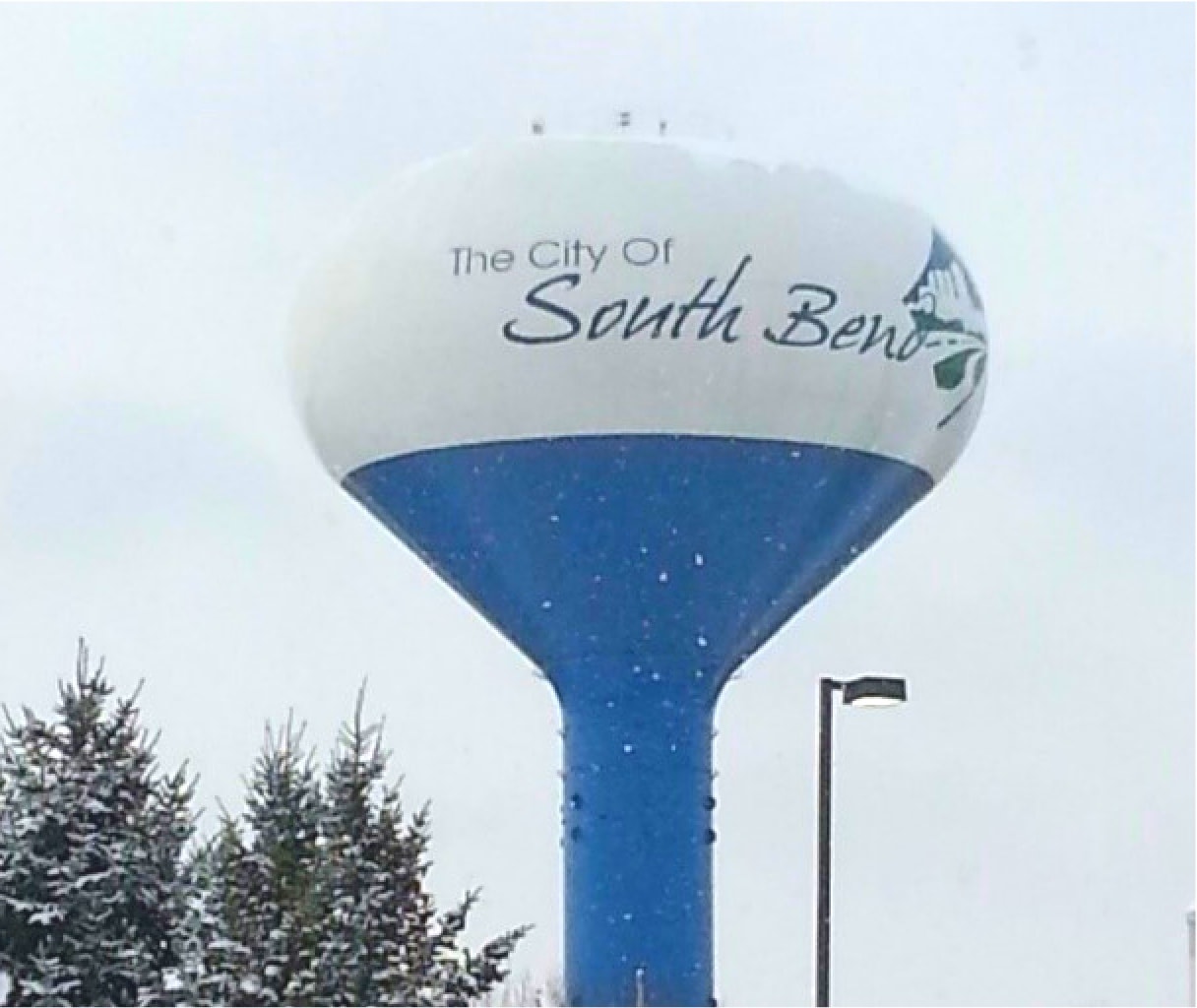About South Bend Utilities
South Bend Utilities in South Bend, Indiana is proud to sustain the wellbeing of their community of over 100,000 by protecting the public and waterways with clean and safe drinking water and wastewater. South Bend Utilities is comprised of 9 drinking water treatment plants and 1 wastewater treatment plant.
South Bend Utilities tests its water before, during, and after treatment, as well as throughout the distribution system. After water is produced from well fields, it makes its way to homes and businesses in South Bend via nearly 600 miles of main. On the wastewater side, South Bend Wastewater Treatment Plant operates under a National Pollutant Discharge Elimination System (NPDES) permit issued by the Indiana Department of Environmental Management, and its plant is designed to treat an average flow of 48 million gallons per day and can treat 77 million gallons a day during high flows.
South Bend Utilities is proud that their water quality meets or exceeds all regulations. With a large number of stakeholders, it is important for South Bend Utilities to efficiently manage and organize their water and wastewater data in order to streamline operations and reporting.
The Challenge
South Bend Utilities used to have a system that made daily operations and processes unnecessarily difficult and time consuming. “Previously, we had to enter data in multiple places each day. Some of our reports were even generated by a single system computer and the data were only available to a couple of people,” explained Michelle Smith, Director of Water Quality and Laboratory at South Bend Utilities. “The program we were using for our monthly drinking water reports only worked on one computer with obsolete software and if it went down, we would have to do all of our tasks manually, which was a constant worry for us.”
Because the staff at South Bend Utilities were also storing other data in different binders and locations, it was becoming increasingly frustrating to find all of the necessary information when it was requested. With more critical awareness arising in-house and in the regulatory environment, South Bend Utilities knew it was time to find a better solution.

The Solution: WaterTrax
After evaluating a few alternatives, South Bend Utilities decided to implement WaterTrax Data Management for their drinking water and wastewater compliance data management requirements. “Now we can store most of our data in one location and it is accessible to everyone who needs it,” explained Michelle Smith. “This allows us to check that our reported data is accurate. We are also using WaterTrax to complete compliance reports, which has saved us time.”
“The user friendly interface of WaterTrax makes it simple to set up alerts to see when things aren’t at normal levels, and it makes our staff aware of issues that might not have come to their attention otherwise.”
Michelle Smith also added how pleased she and her colleagues have been with WaterTrax support, saying, “They are quick to respond and really listen, which is much appreciated.”

Centralizing Data
“The most useful feature of WaterTrax for our organization is having all of the data in one place. Before, we had multiple files, and now, you can go to one place to get it all,” said Michelle Smith. By centralizing data with WaterTrax, Michelle and her colleagues have been able to experience significant time savings. “Before, with so many of our files kept in binders and on a single computer, when someone asked for a specific piece of information it could take hours and hours, sometimes days, of work to find it. We would have to wait for reports to be printed out at the end of the month and then stored away. Now, it takes less than 30 minutes to pull together what data is needed and I don’t have to tell people that I’ll get back to them next week when they ask me for something.”
Previously, all of the data required for South Bend’s monthly drinking water reports was stored in a system only accessible from one computer. Now, with WaterTrax, all water and wastewater data in the system is accessible to anyone at South Bend Utilities who has access to a computer, which further improves time efficiencies related to data access.
WaterTrax has been a great addition for South Bend Utilities! I can quickly look up recent or historical data without having to take someone else’s time or skim through paper, pdf, or other digital reports. We are very happy with our decision to go with WaterTrax. I would absolutely recommend it to other utilities!

Mapping Feature
In the past, South Bend Utilities was doing mapping tasks by hand with a physical paper map. With WaterTrax’s mapping feature, this process is much easier. Now, the staff at South Bend Utilities use the mapping feature for complaint management and for plotting out sampling locations.
“I am able to log all complaints, such as discolored water calls, and pull up a map in WaterTrax to show where we have issues in the distribution system. It’s very helpful to have this visual and then be able to easily share it with others.”

Historical Trending & Reporting
During implementation, South Bend Utilities had their historical data uploaded into WaterTrax, and now use the system to query and access historical data. “We had historical data that we wanted to be able to access easily, especially on the wastewater side of things, so that data goes back many years,” explained Michelle Smith. “On the drinking water side, we kept the critical information but we were also able to make more of a fresh start with the WaterTrax system.”
WaterTrax has also improved the process of generating South Bend Utilities’ Monthly Operating Reports and NetDMR reports because the data is now more centralized. With each plant having to do their reporting in slightly different ways (for example, in terms of chemical usage and permit requirements), reporting was a complicated task.
“Previously, we had this information stored in multiple locations, including hard copies, spreadsheets, and in an obsolete software,” explained Michelle Smith. “If that software on our one computer had gone down, we would have had to do everything manually. That was the main reason we chose WaterTrax. We couldn’t risk not having access to our data.”
As the Director of Water Quality and Laboratory, Michelle Smith appreciates the ability to quickly and easily query data with WaterTrax, saying, “WaterTrax has been especially helpful to me in my position, as I can quickly look up recent or historical data without having to take someone else’s time or waste my own skimming through paper, pdf, or other digital reports.”
Since the recent water quality events in Flint, Michigan, everyone has been paying more attention to water quality issues. South Bend’s next review for lead and copper testing is in 2019 and WaterTrax will be very helpful for this. Results from around the distribution system will be entered into WaterTrax directly from the labs and this data will then be easy for us to access, map, and report to ensure compliance.

Results
“Since the recent water quality events in Flint, Michigan, everyone has been paying more attention to water quality issues. South Bend’s next review for lead and copper testing is in 2019 and WaterTrax will be very helpful for this. Results from around the distribution system will be entered into WaterTrax directly from the labs and this data will then be easy for us to access, map, and report to ensure compliance.”
Solution Highlights
-
Data centralized in one location are easily accessible to stakeholders
-
Alerts are conveniently set up to automatically notify staff of issues
-
Compliance reporting is simple to complete
-
Complaint management tasks are quickly visualized and shared
-
Historical data are readily queried and accessed by staff

